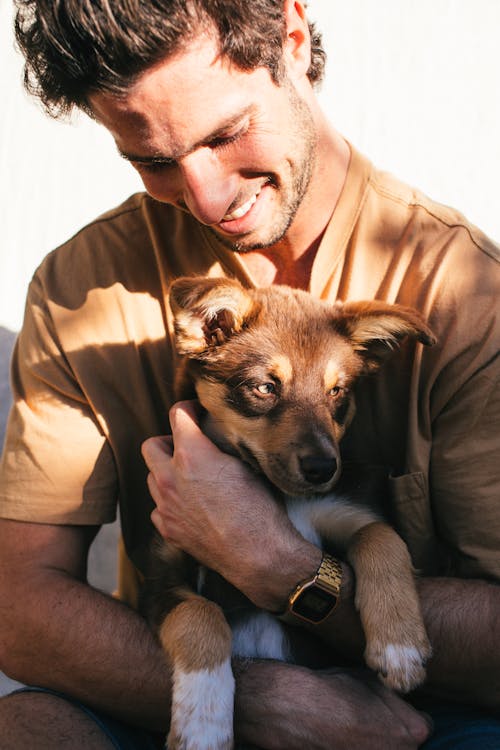how do i teach my puppy to calm down؟

How to Teach Your Puppy to Be Calm*
Teaching a puppy to remain calm is a crucial aspect of their training and development. It helps them adapt to various situations, reduces their stress, and improves their overall behavior. Here’s a step-by-step guide to effectively teach your puppy the art of calmness:
### 1. Establish a Calm Environment
Start by creating a serene environment for your training sessions. A quiet room with minimal distractions will help your puppy focus better. Avoid noisy areas and sudden disturbances that could undermine their learning process.
### 2. Introduce a Calm Command
Choose a specific command that you will consistently use to indicate calm behavior. Words like "Calm," "Quiet," or "Easy" work well. Make sure to use a soft, firm tone to convey the sense of calm you want your puppy to emulate. Consistency in your command will help your puppy understand and respond more effectively.
### 3. Reinforce Positive Behavior
Whenever your puppy displays calm behavior, immediately reward them with treats and praise. Positive reinforcement is key to reinforcing desired actions. This approach helps your puppy associate calmness with rewards, making them more likely to repeat the behavior.
### 4. Teach Relaxation Techniques
Incorporate specific exercises to help your puppy learn to relax. Commands like "Sit" and "Down" are foundational. Once your puppy is in these positions, gently encourage them to stay in place. Use a calming voice and avoid sudden movements that might excite them.
### 5. Gradually Introduce Distractions
As your puppy becomes more proficient at staying calm in a quiet environment, gradually introduce mild distractions. Start with low-level distractions and progressively increase their intensity. This gradual exposure helps your puppy learn to remain calm even when faced with various stimuli.
### 6. Practice Regularly
Consistency is crucial. Practice these exercises regularly to help your puppy build a strong understanding of what is expected. Frequent short training sessions are more effective than occasional long ones.
### 7. Be Patient and Persistent
Teaching calmness requires time and patience. Puppies may not master the skill immediately, so it’s important to remain patient and persistent. If your puppy becomes overly excited or anxious, take a step back and return to simpler exercises before gradually reintroducing more challenging scenarios.
### 8. Manage Your Own Behavior
Your demeanor significantly impacts your puppy’s behavior. Remain calm and composed during training sessions. If you’re anxious or stressed, your puppy may mirror those emotions. Your calm presence will help set a positive example for your puppy.
In conclusion, teaching your puppy to be calm involves creating a conducive environment, using consistent commands, reinforcing positive behavior, and practicing patience. By following these steps, you’ll foster a well-behaved and relaxed companion ready to handle various situations with ease.